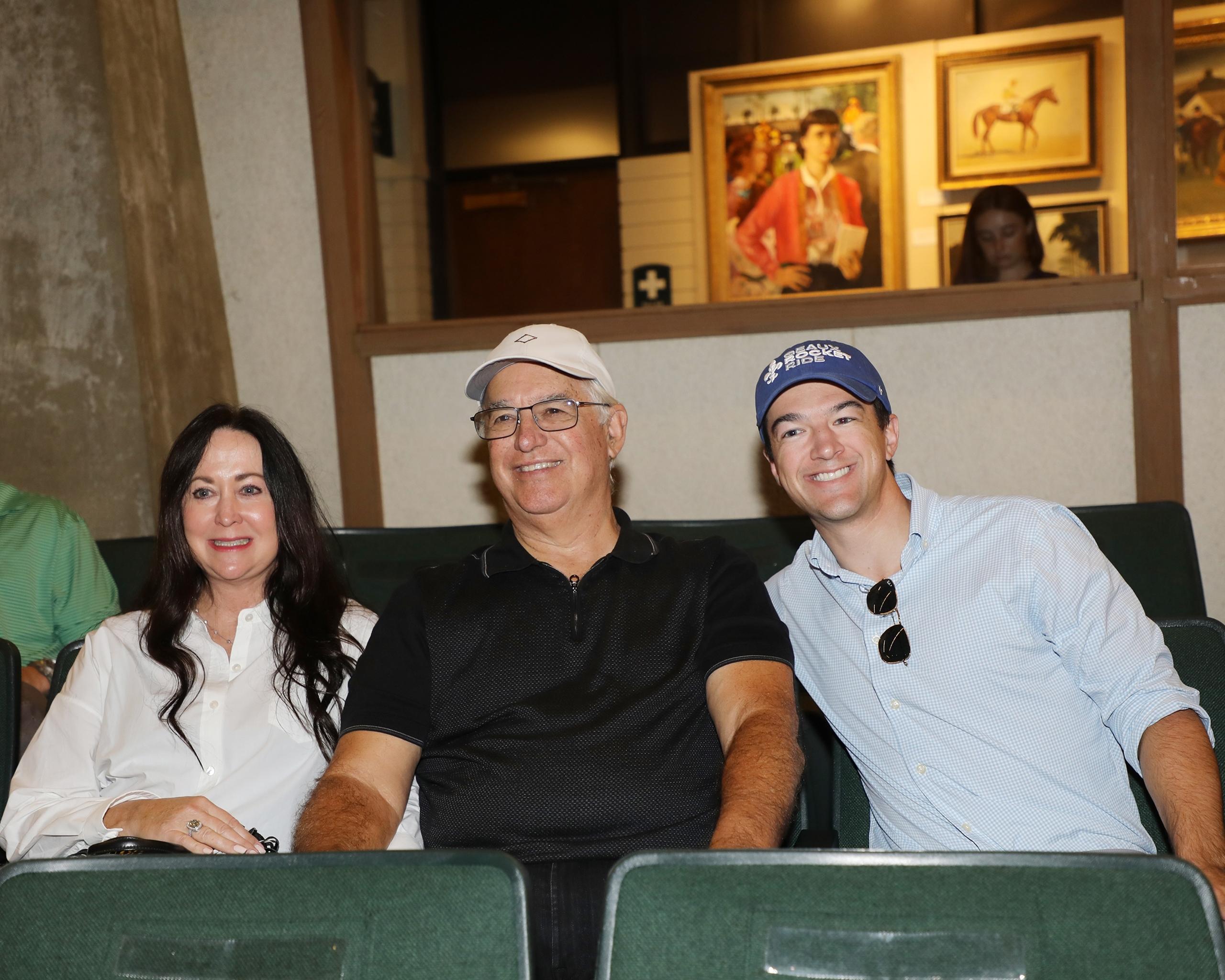
Richard Mandella: A Lifelong Horseman Who Crafted a Hall of Fame Career

Ben Bernhard will be the first to tell you that he is very much new to racing, but he does bring something unique to his jobs as the CEO and co-founder of Stable Analytics and as vice president of Pin Oak Stud, a Thoroughbred farm near Versailles, Ky., owned by his parents, Jim and Dana. The couple bought their first racehorse, Grade 1 winner Geaux Rocket Ride, as a yearling in 2021, and purchased Pin Oak the following year.
Stable Analytics delivers modern engineering and data science to horse racing. Its featured products are equine wearable biometric sensors (Equigraph) for safety monitoring and early detection of musculoskeletal injuries in Thoroughbreds, and data-driven pedigree modeling to determine optimal racetrack outcomes (Equient).
Bernhard, 28, is a former engineer for SpaceX, a company that designs and launches advanced rockets and spacecraft.
His answers have been edited for clarity and space.
BloodHorse: How did the company you co-founded, Stable Analytics, come into existence?
Ben Bernhard: My background is in technology, engineering, and data science. When I got into horse racing, my goal was to be able to make contributions through the technology space and that’s what the focus of Stable Analytics is.
BH: Was it difficult for you to leave what you were doing at SpaceX?
BB: When I was in school, I always wanted to get into the space industry. The goal was always space. I really enjoyed my time at SpaceX, but at the same time, I started to get into horse racing just as my family got into it. I noticed there were a lot of opportunities where I thought technology could make an impact in the industry, and the industry itself is a lot of fun, so that’s what led me to make the switch.
BH: Your team at Stable Analytics – Byron Rogers, director of research and development, and Dr. Tim McGrath, director of engineering – have diverse backgrounds.
BB: They were brought on for their specific skill set. It’s building a team from both sides of things, with experience in data science and engineering, but also in the horse racing industry. Byron is here specifically for his expertise in data science and pedigree analysis. His main focus at Stable Analytics is building this machine learning-based pedigree platform. Tim was brought along specifically for his expertise in estimation theory, specifically as it applies to our wearable devices.
BH: Equibase collaborates with Stable Analytics on your wearable devices. How did that partnership come about?
BB: Stable Analytics is a small team that has good expertise in engineering and developing products, and Equibase is the best at distributing data widespread in the industry. We thought that partnering with them would enable us to get our product out there as quickly and efficiently as possible.
BH: At what point in development are Stable Analytics’ wearable devices?
BB: They are still in the study phase. The main study is (being conducted by the American Association of Equine Practitioners). They put together a study this year where there are six wearable companies that have been selected for the final phase of the study, which is from Jan. 1, 2025, through the end of 2025. Each sensor company recruits at least 100 2-year-olds to wear the wearables during training throughout the year. Each wearable company will do its analysis on each horse and make predictions about injuries and submit them to the study database, and the AAEP will track what sensors are correctly identifying injuries before they happen.
We’re also using the wearables at Pin Oak.
BH: What is your role at Pin Oak?
BB: In general, we like to make well-rounded decisions based on data and traditional horsemanship. I do high-level strategy and decision making and a lot of that is data-driven analysis; whether it is for breeding decisions, like matings, or racing decisions, picking out races for horses, or selecting trainers, sales decisions. Really for anything, I try to take a data-driven approach and take that to the table, because we have other experts that are great horsemen and can bring that perspective in.
BH: What do you hope to achieve through your participation in the industry?

BB: My main overarching goal is eliminating catastrophic injuries, and it’s a very lofty goal, and it’s going to take years and years, not just one year. But, really, the goal is zero catastrophic injuries and nothing (short of that) is acceptable.
If the sensors play a role in that, great. If it’s some other thing we figure out, great. If it’s something else someone else figures out, I will drop the sensors and do what they suggest. I really just want the injuries to go away.
BH: How fun is this for you, to be able to meld two things you love: science and horses?
BB: It’s very fun. Part of my role at SpaceX was sitting in Mission Control for a mission I was working on for a year, maybe two years. Being a part of it, actively doing things in Mission Control, and then seeing it all come together and be successful – it’s a great, great feeling. My friends from there ask me, ‘Don’t you miss that feeling?’ I tell them it is a similar feeling watching your horse win a race after putting in a bunch of work with that horse. Maybe you bred that horse, raised that horse, analyzed the data while it was training, and you see it win.
BH: You had a fondness for Geaux Rocket Ride, your parents’ first horse. How did his life-ending injury affect you?
BB: I was living in L.A. at the time he was in training with Richard Mandella at Santa Anita. I would go down there on the weekends and watch him train. That is really what got me interested in racing. What happened to Geaux Rocket Ride, specifically, is what has made me so passionate about preventing injuries.